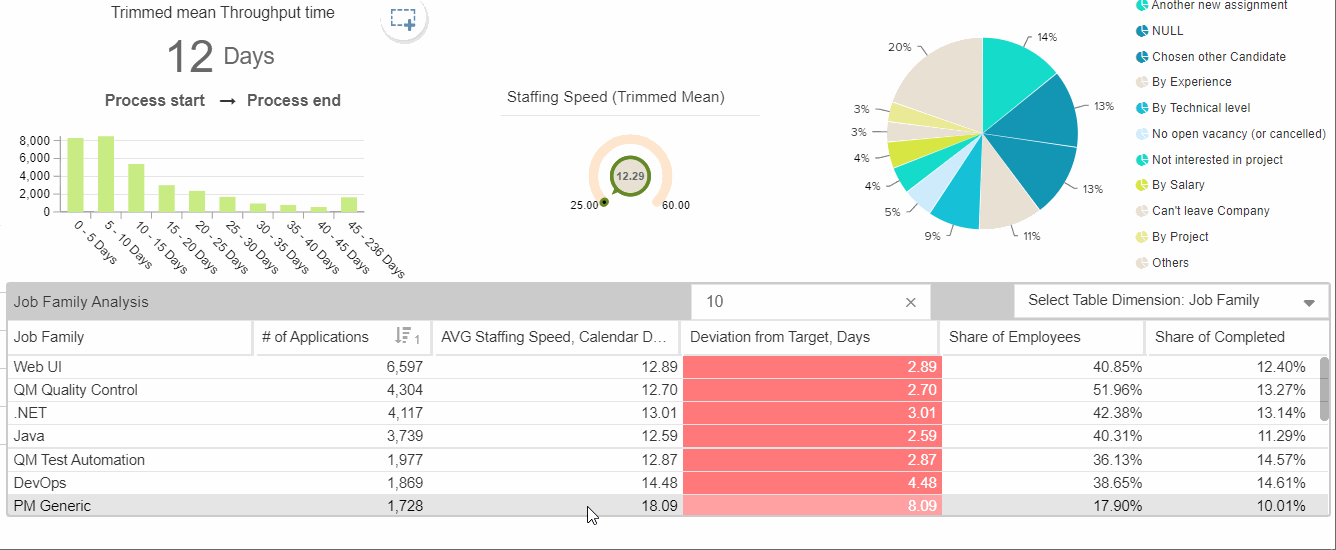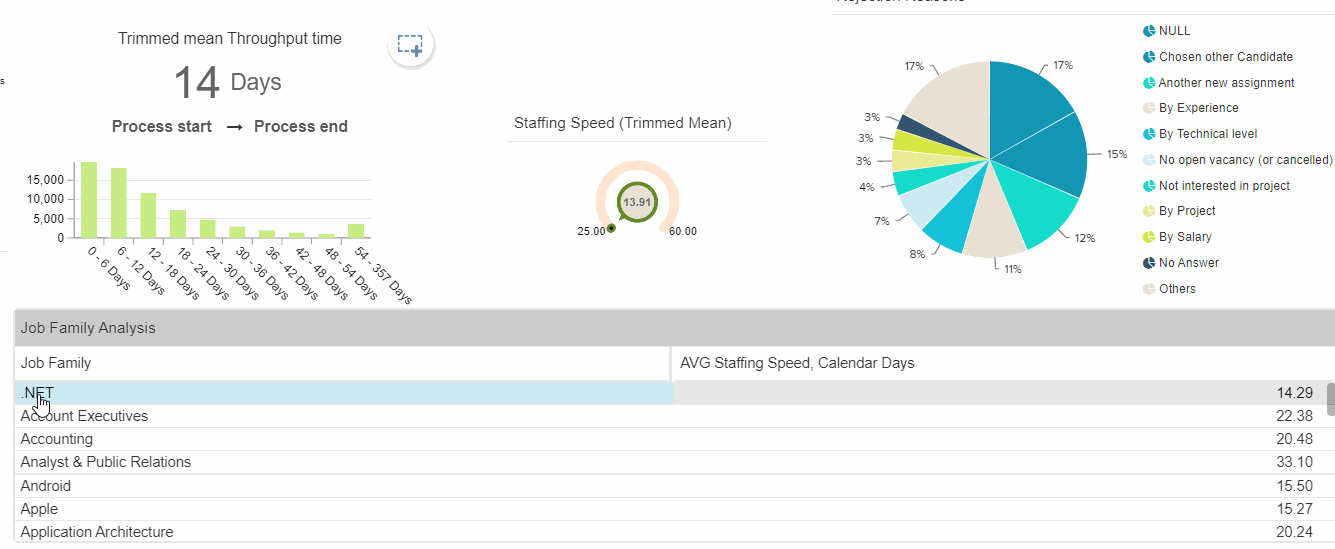Hi!
I am using the same simple formula to calculate the average throughput time in the OLAP table and in the Gauge Component. OLAP table has dimensions (e.g. Job Family). The case is a Vacancy ID, and there are 2 basic tables in the data model: dimensions table (containing Job Family attribute) and facts table (activity table for the Vacancy status changes) where Vacancy ID is a key. So the data model is pretty simple as well.
Could you please help me to figure out why I am constantly getting different results when I am comparing throughput time calculated based on OLAP table selection with the throughput time calculated by a single component (e.g. Gauge or Throughput Time Search)?

Throughout Time formula:
TRIMMED_MEAN
(CALC_THROUGHPUT
(ALL_OCCURRENCE['Process Start'] TO
ALL_OCCURRENCE['Process End'], REMAP_TIMESTAMPS("GTO_Application_Workflow_csv"."CHANGE DATE", DAYS)))
This topic can be related to https://www.celopeers.com/s/question/0D50700000GC6pMCAT/throughput-calculation-data-discrepancy and





